Prosodic boundary strength and prevocalic T-glottaling in Massachusetts English
Kamil Kaźmierski
Adam Mickiewicz University, Poznań, Poland
Accents 2023 Łódź:: November 30 - December 2, 2023
kamil.kazmierski@amu.edu.pl
Slides available at: kazmierski-accents2023.netlify.app
T-glottaling in American English
T-glottaling in American English
T-glottaling in American English
Unexpected: Competes with flapping
Ex. 1: Intervocalic /t/ as a glottal stop
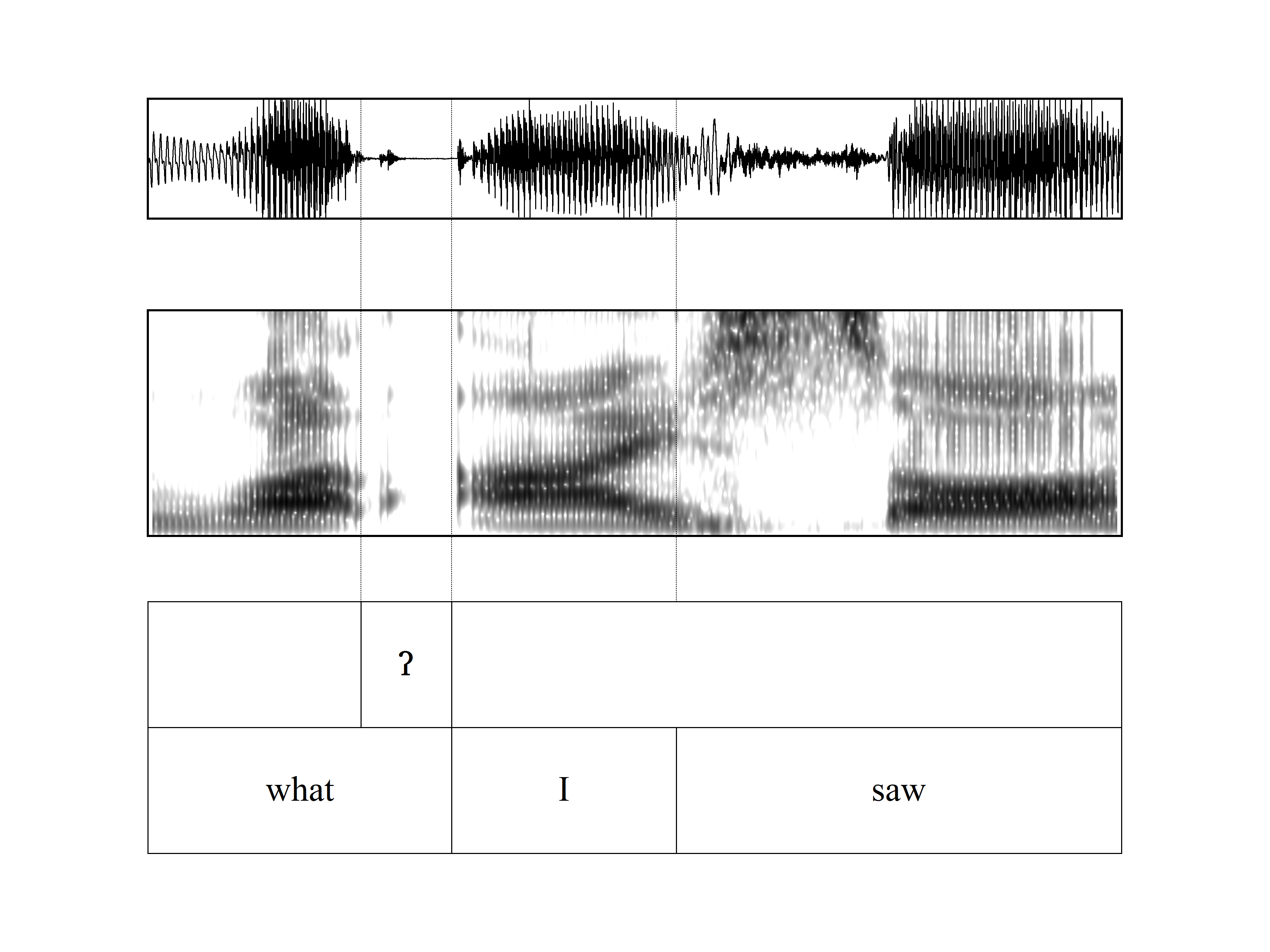
Ex. 2: Intervocalic /t/ as an 'incomplete' glottal stop
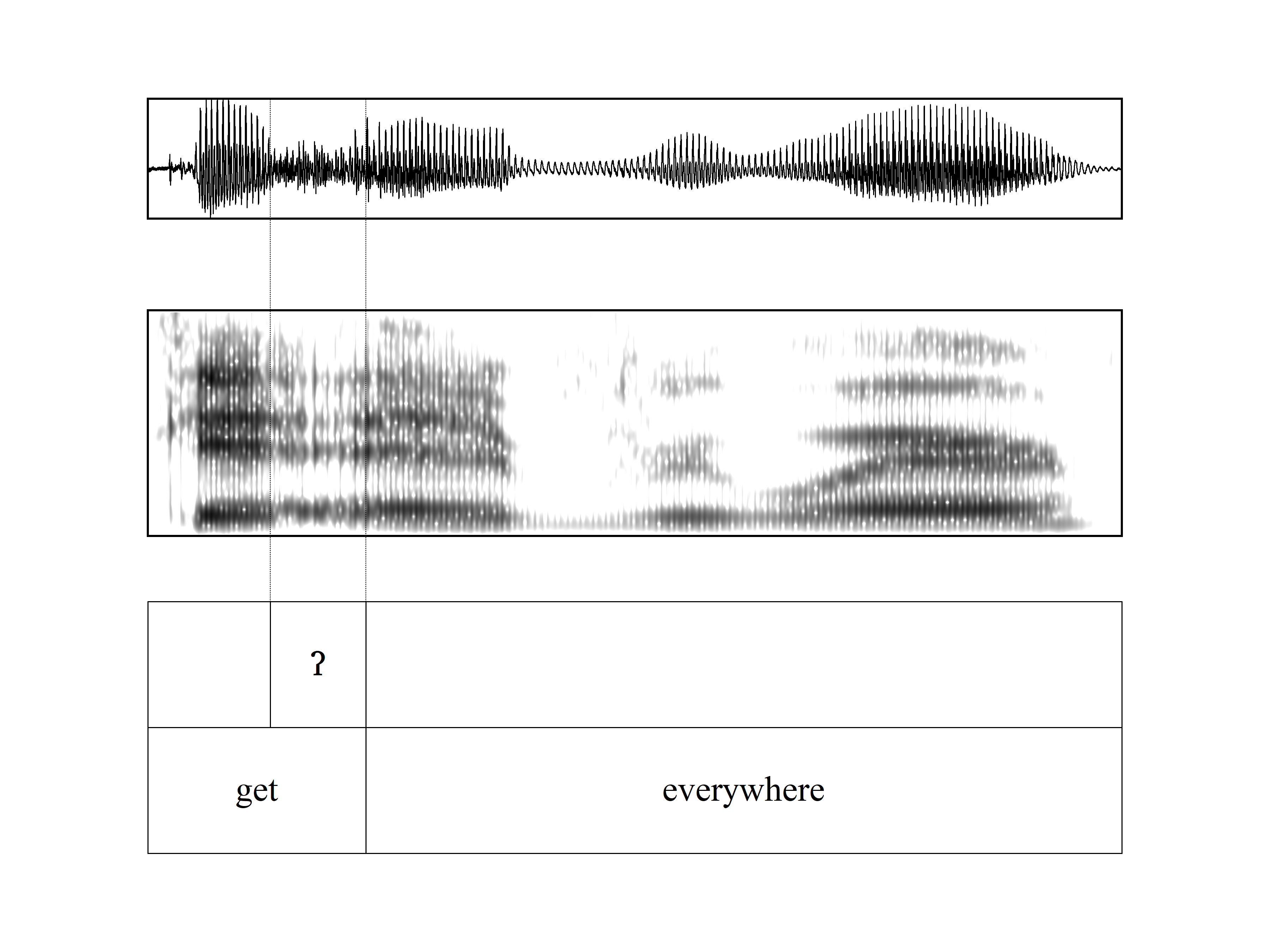
T-glottaling; gender by age effect

Kaźmierski, Kamil. 2020. Prevocalic t-glottaling across word boundaries in Midland American English. Laboratory Phonology 11(1), 1-23.
Method :: Data
- Speakers from Massachusetts (N = 20)
- Interview speech (UMass Amherst lab)
- ASR with WebMAUS (LST Radboud University)
- aligned with FAVE-Align (Rosenfelder et al. 2014)
- Audio & TextGrids available at https://osf.io/mfu5y/
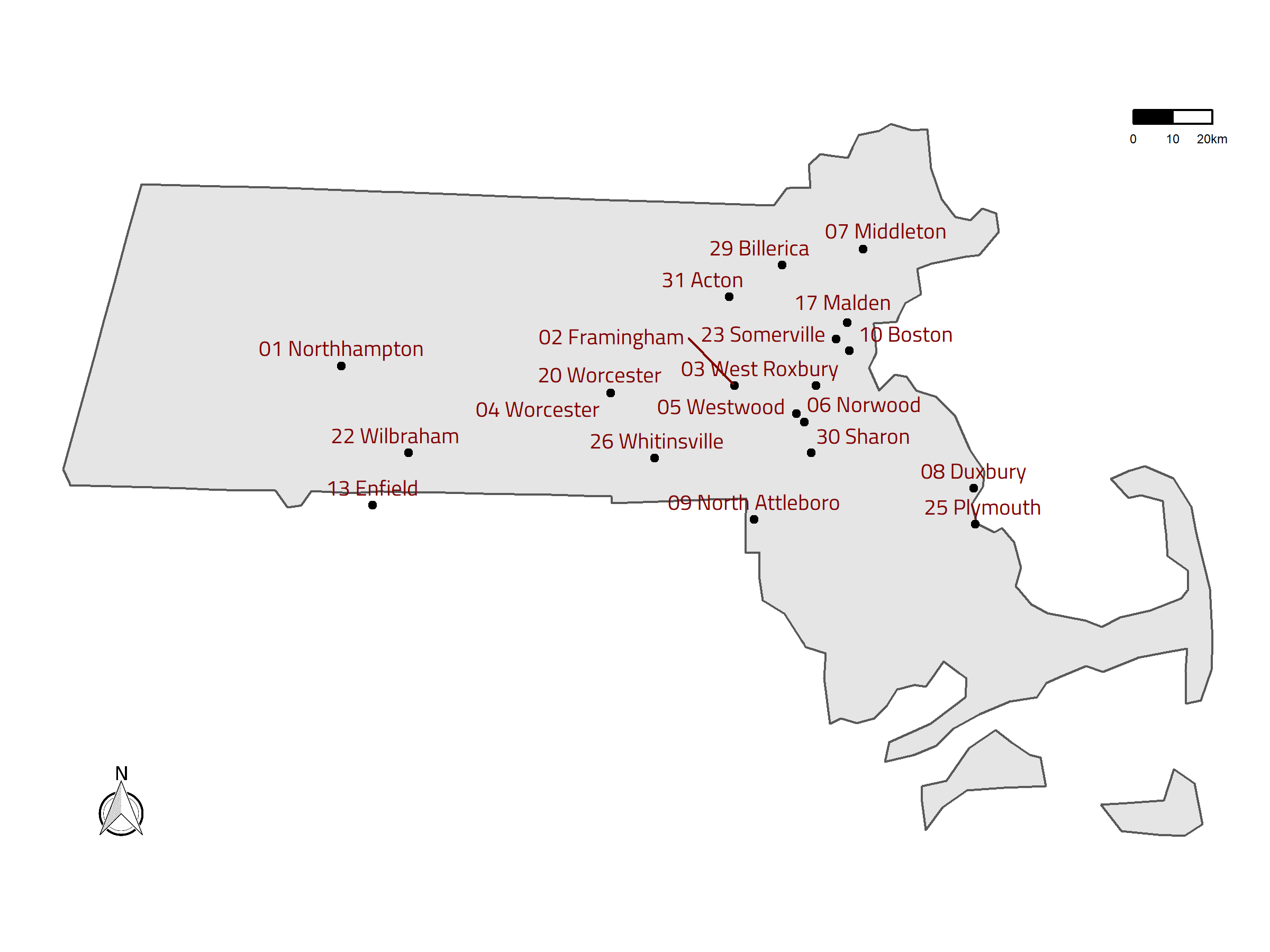
Method :: Analysis
- Corpus querying in Labb-CAT
 (Fromont & Hay 2012)
(Fromont & Hay 2012) - 1,652 two word sequences with word-final pre-vocalic /t/
- Contexts with word$_2$ starting in /ən/ and /ɪn/ omitted
- Manual annotation of /t/ based on audition + spectrograms
- Boundaries hand-corrected
- Automatic annotation of prosodic boundaries with wavelet prosody toolkit (Suni et al. 2020)
- Bayesian Mixed-effects Binomial Logistic Regresion Modeling with
brms(Bürkner 2017) in R (R Core Team 2023)
1/7: Glottal stop [ ʔ ]
- no release burst
- identifiable hold stage
- irregular vibration before and/or after
19 yo, Northampton

2/7 Incomplete glottal stop [ ◌̰ ]
- no release burst
- irregular vibration throughout
21 yo, Framingham

3/7 Glottal reinforcement [ ʔ͡t ]
- formant movement indicating tongue gesture
- release burst
- irregular vibration
19 yo, Northampton

4/7: Inaudible release [ t̚ ]
- formant movement indicating tongue gesture
- no release burst
- no irregular vibration
29 yo, Worcester

5/7 Flap [ ɾ ] flap
- clear auditory impression
- hold stage + release
- decrease in intensity
18 yo, West Roxbury

6/7 'regular' release [ t ]
- identifiable hold stage
- discernible release burst
21 yo, Worcester

7/7 Deletion [ ∅ ]
- no discernible trace of the consonant
20 yo, Westwood

Results
Overall distribution of allophones
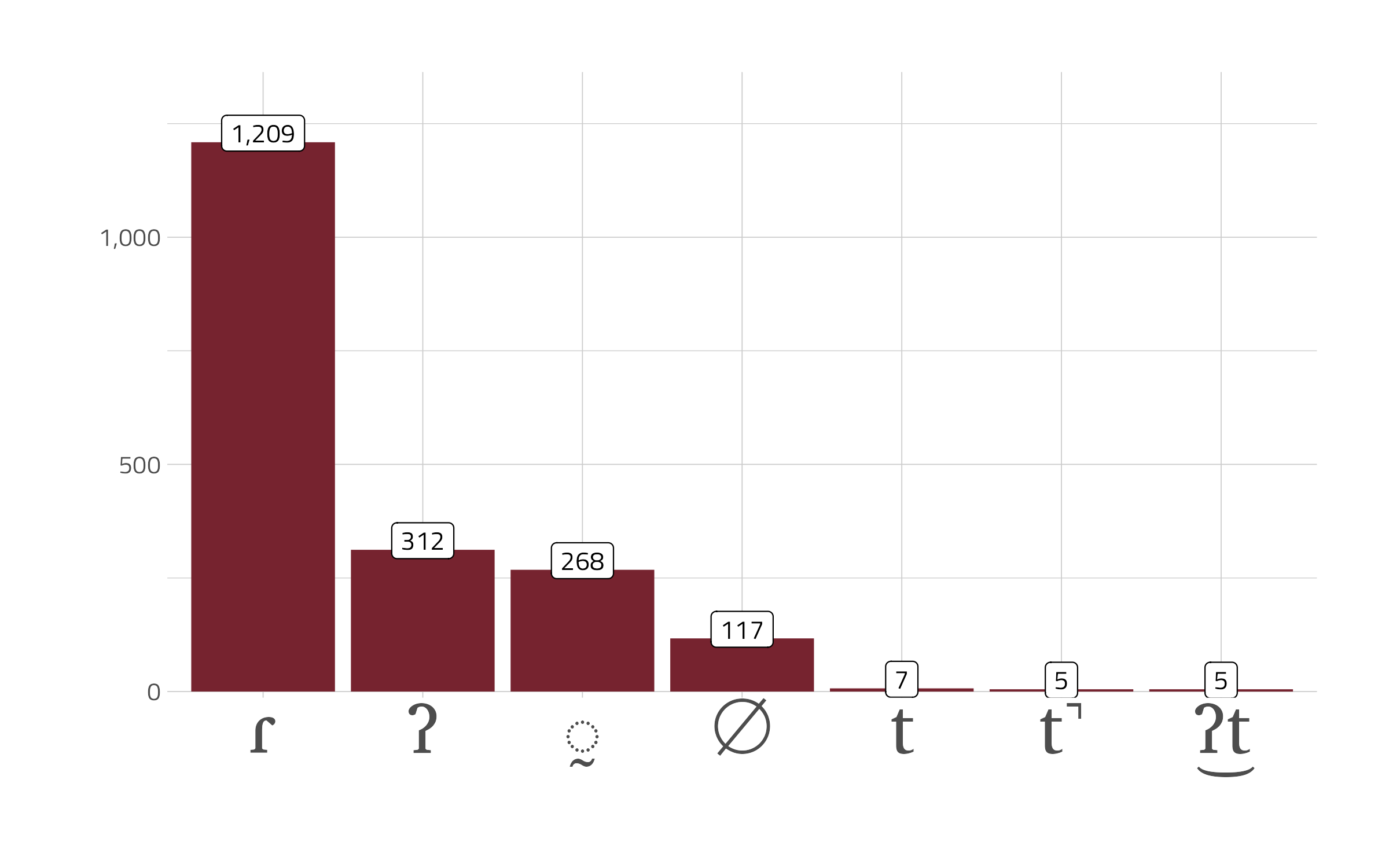
ʔ and ◌̰ → ʔ
ʔ and ◌̰ → ʔ
ɾ → ɾ
ʔ and ◌̰ → ʔ
ɾ → ɾ
the rest → 🚮
ʔ and ◌̰ → ʔ
ɾ → ɾ
the rest → 🚮
N = 1,652 → 1,517
Distribution by strength of prosodic boundary
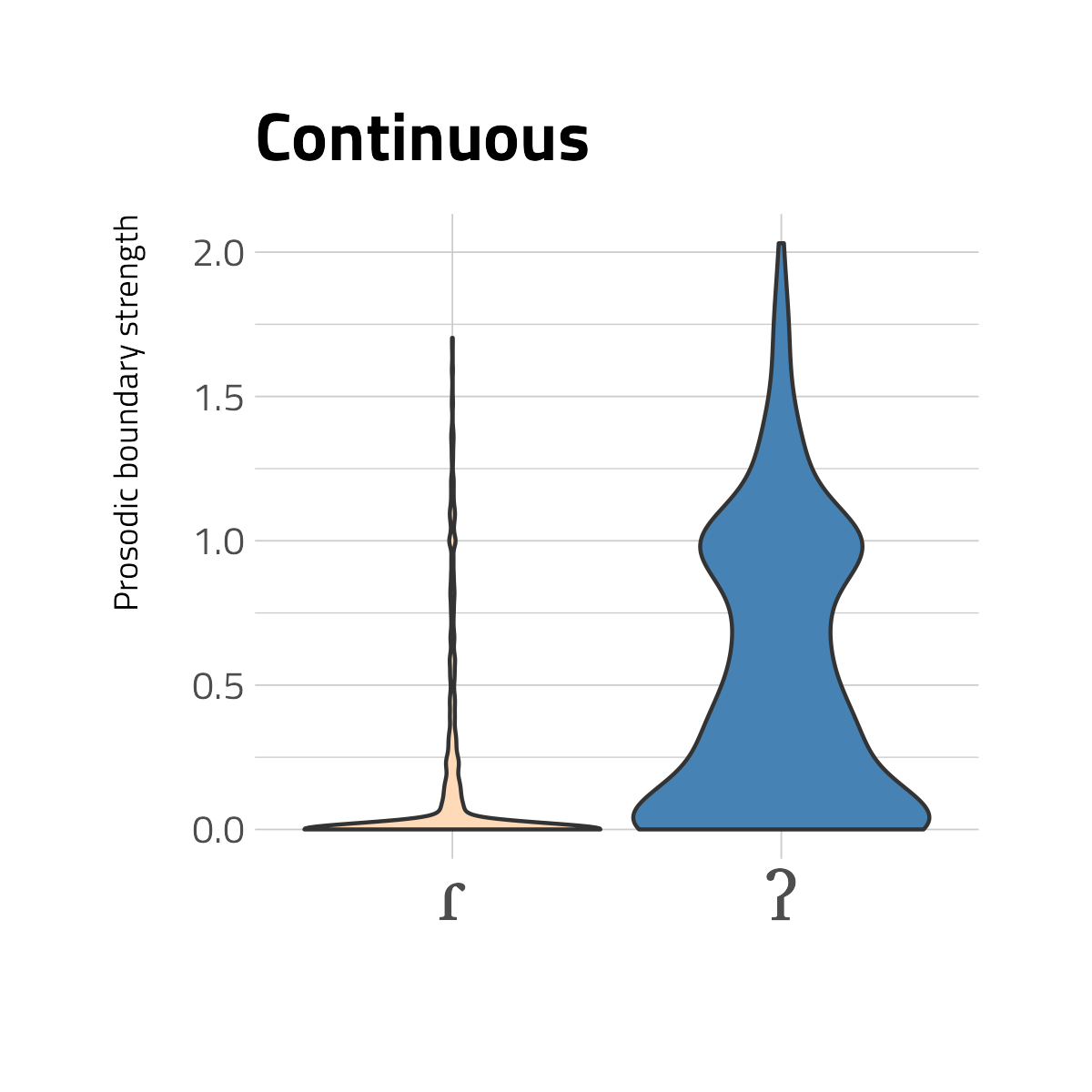
Distribution by strength of prosodic boundary

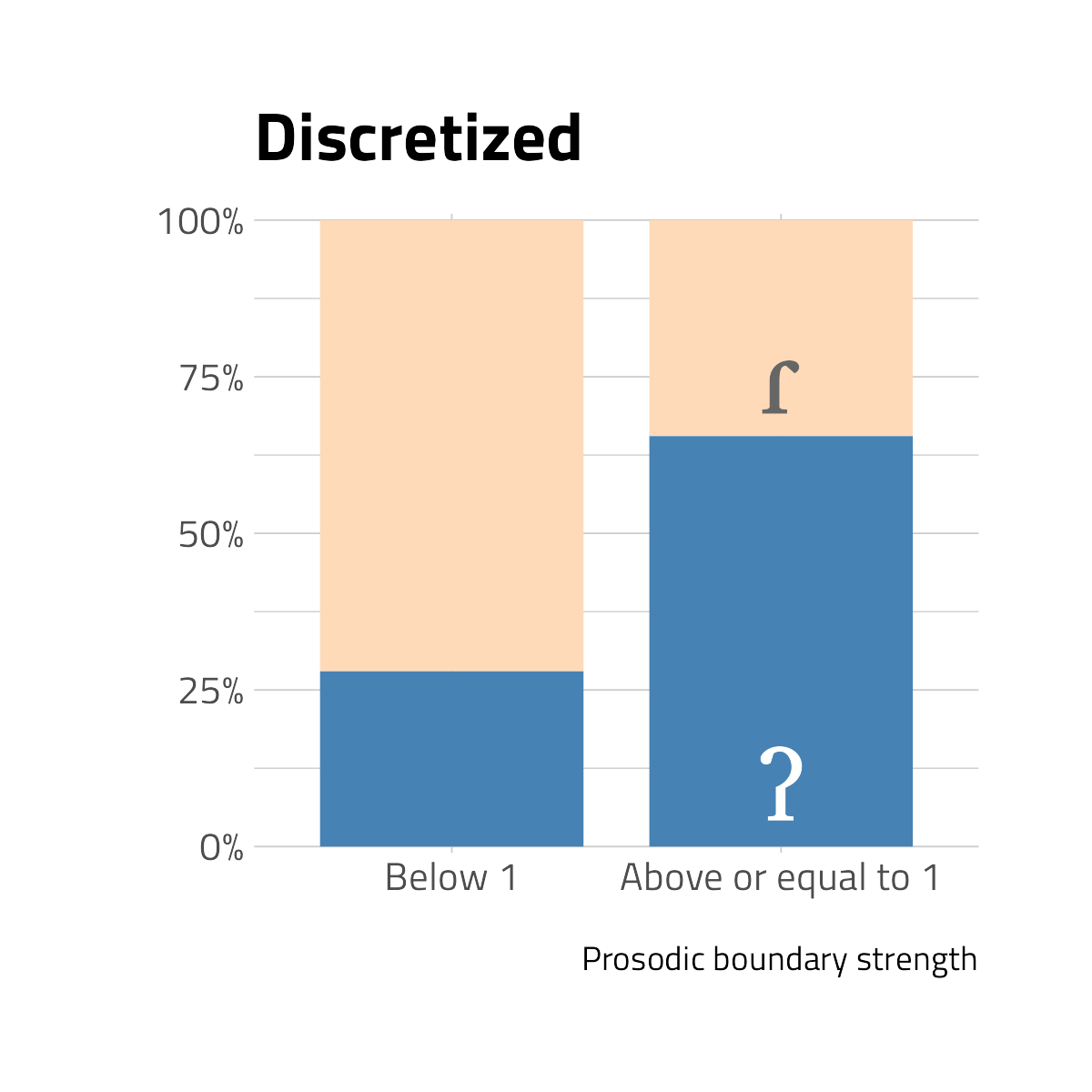
Duration of word1
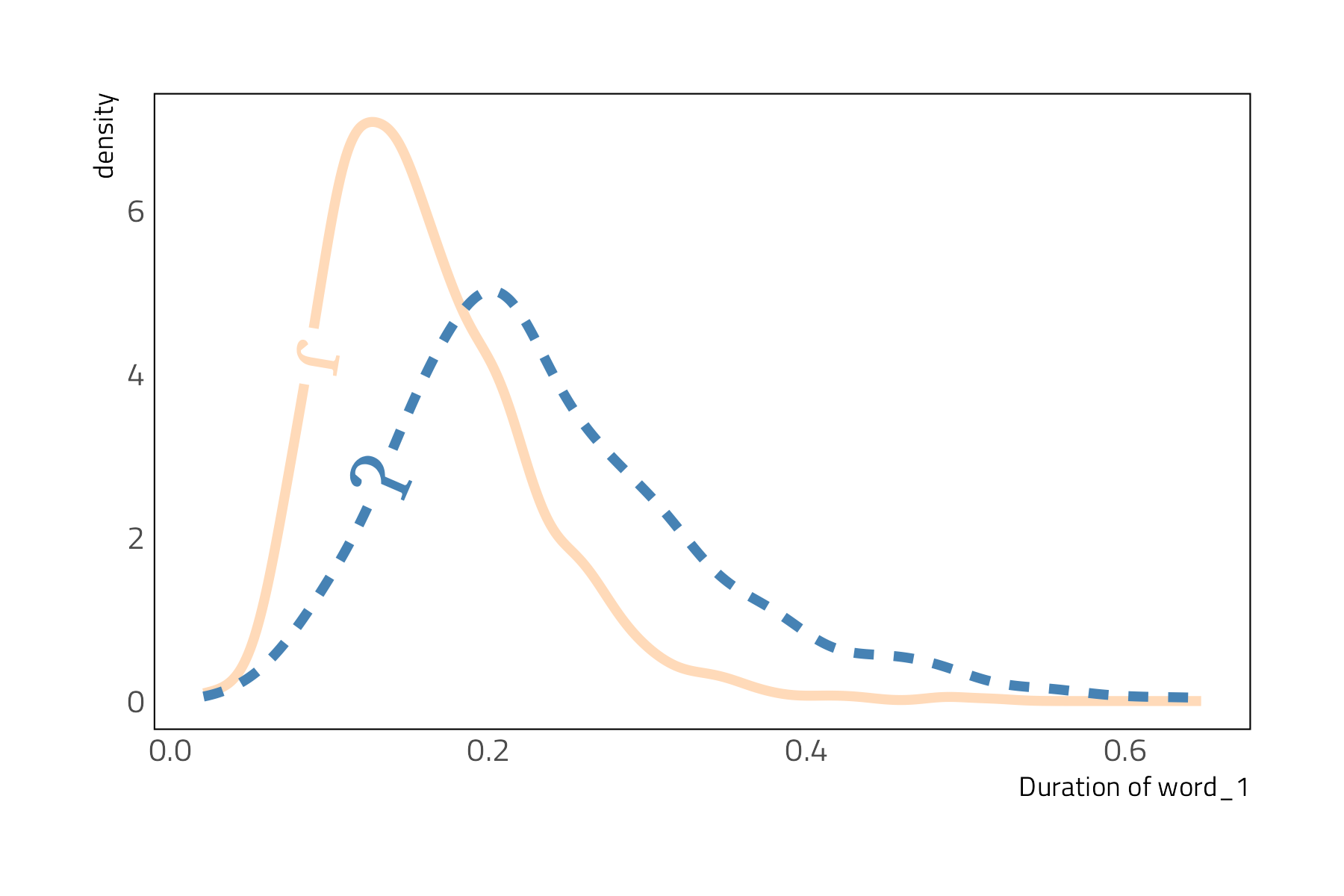
Individual variation
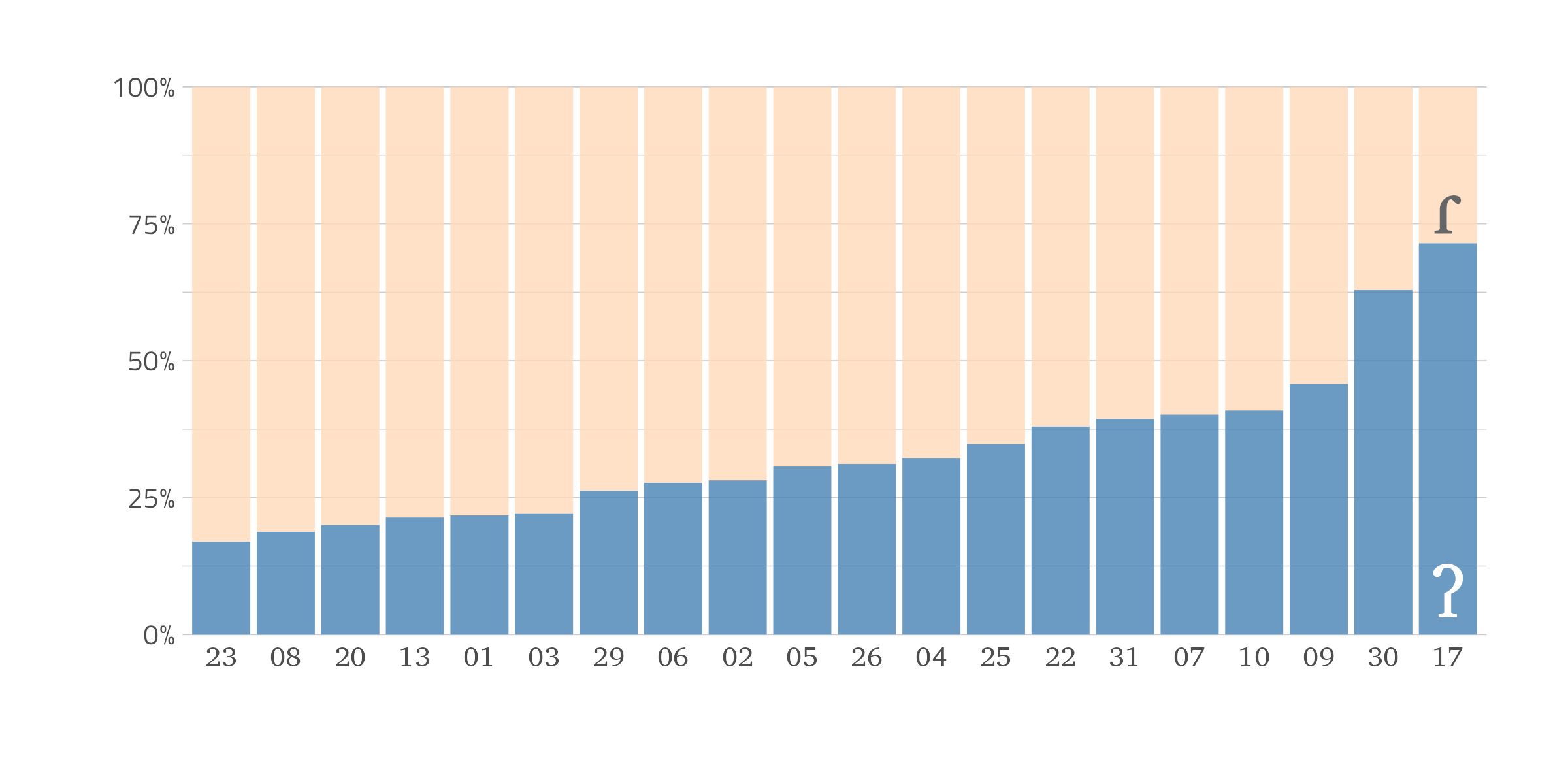
Modeling results
Modeling results :: Average probability of ʔ

Probability of glottaling over flapping, shaded area indicates 95% Credible Interval
Modeling results :: Predictors (fixed effects)
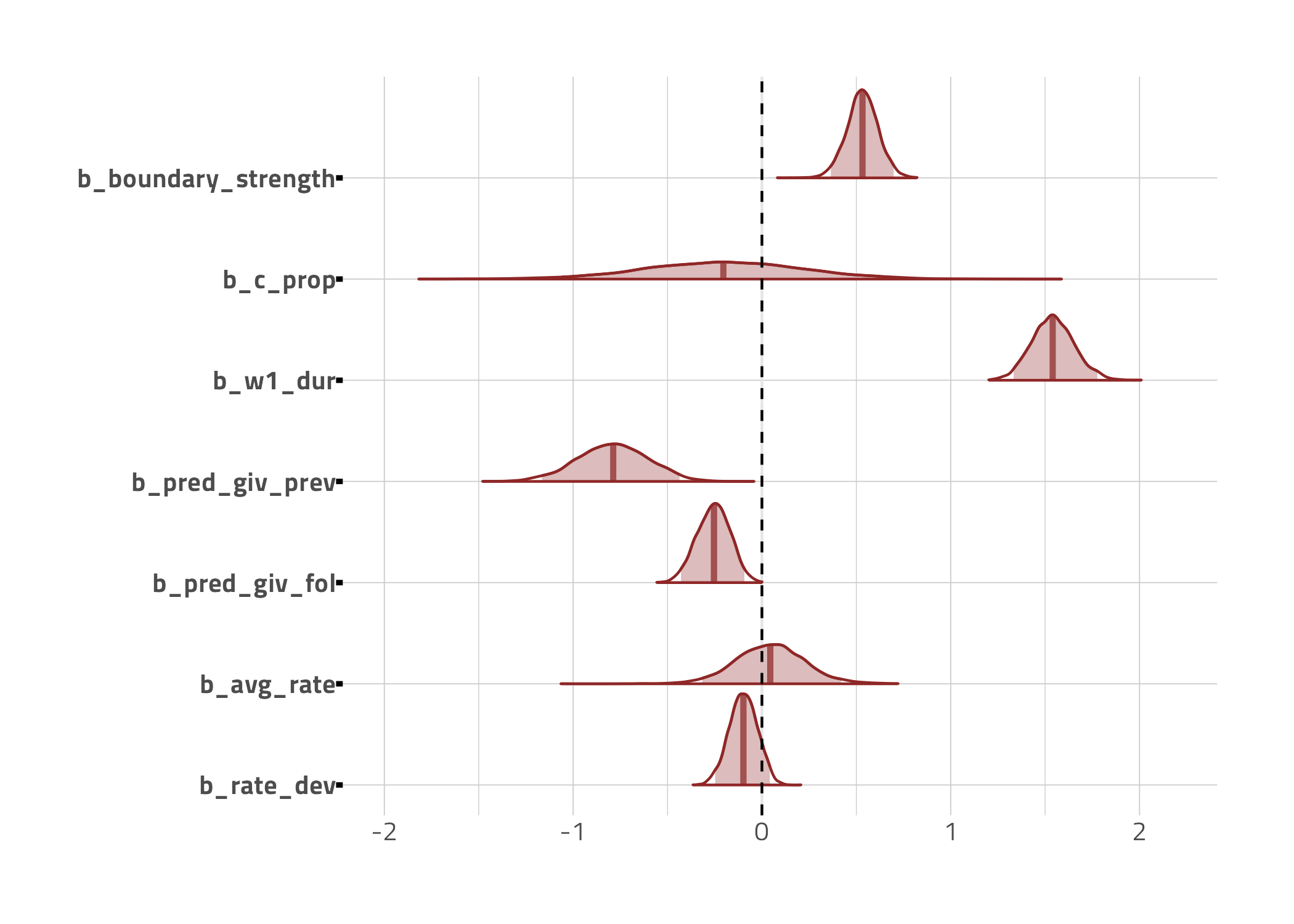
Random forest
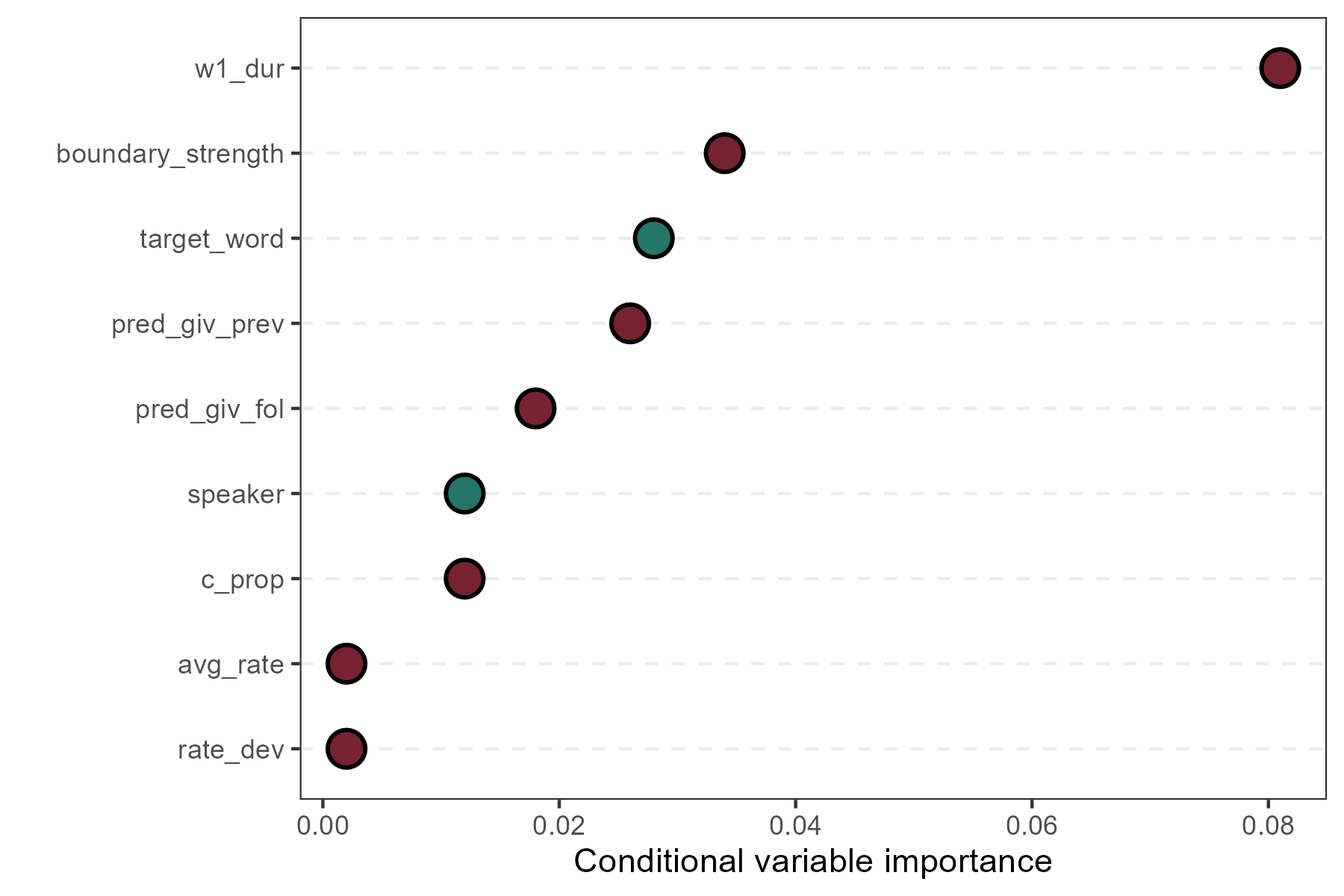
Discussion :: Production planning
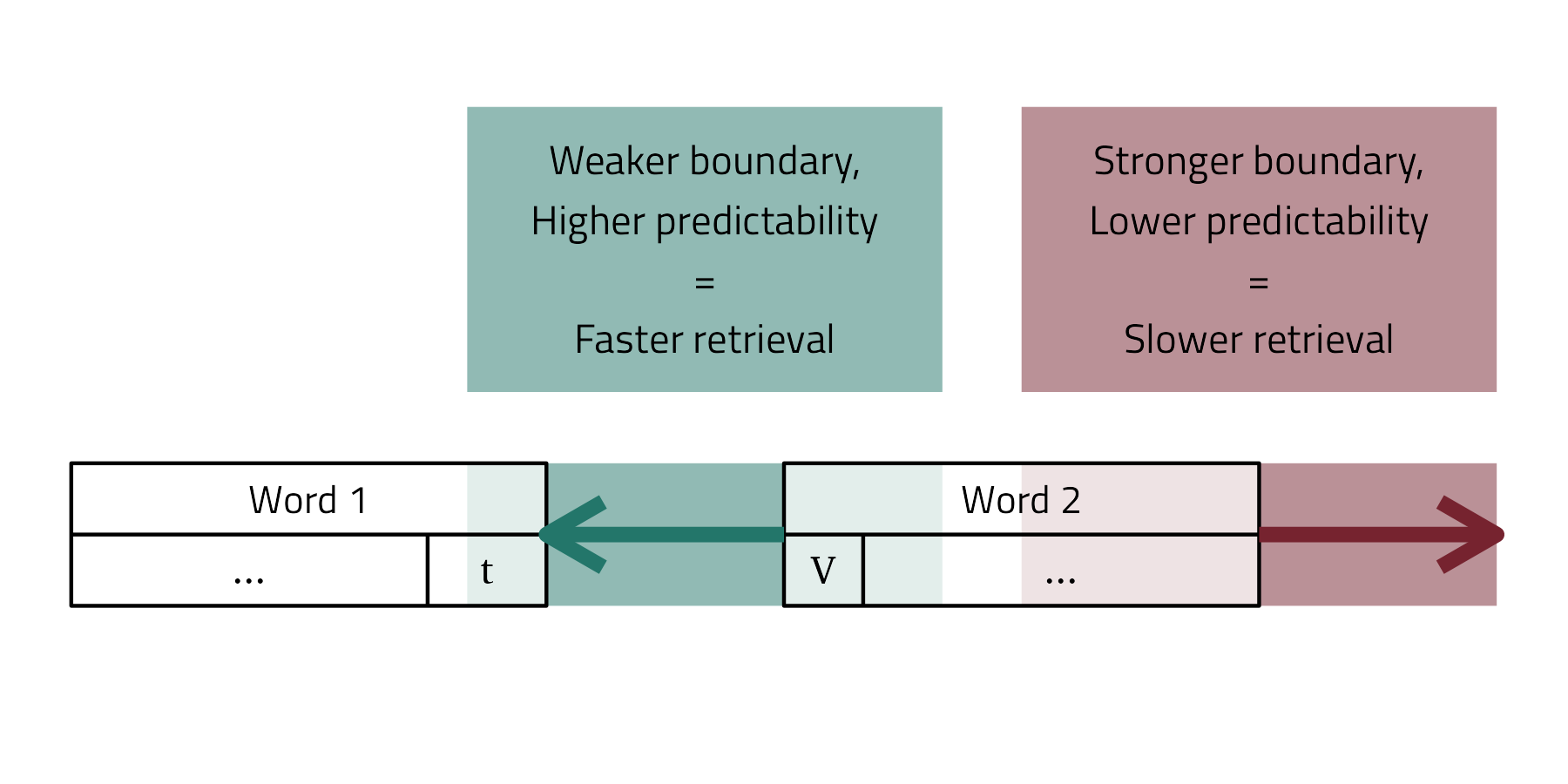
Conclusions
- T-glottaling rate: empirical 32%, fitted: 8%, 95%CrI = [4%, 15%]
- Most common realizations: [ɾ] > [ʔ] | [ ◌̰ ] > [ ∅ ] , next to no [t]
- More prominent boundary, longer first word, lower predictability are positively associated with probability of t-glottaling
- The less likely the two words are to be planned together, the more likely t-glottaling becomes
Thank you!
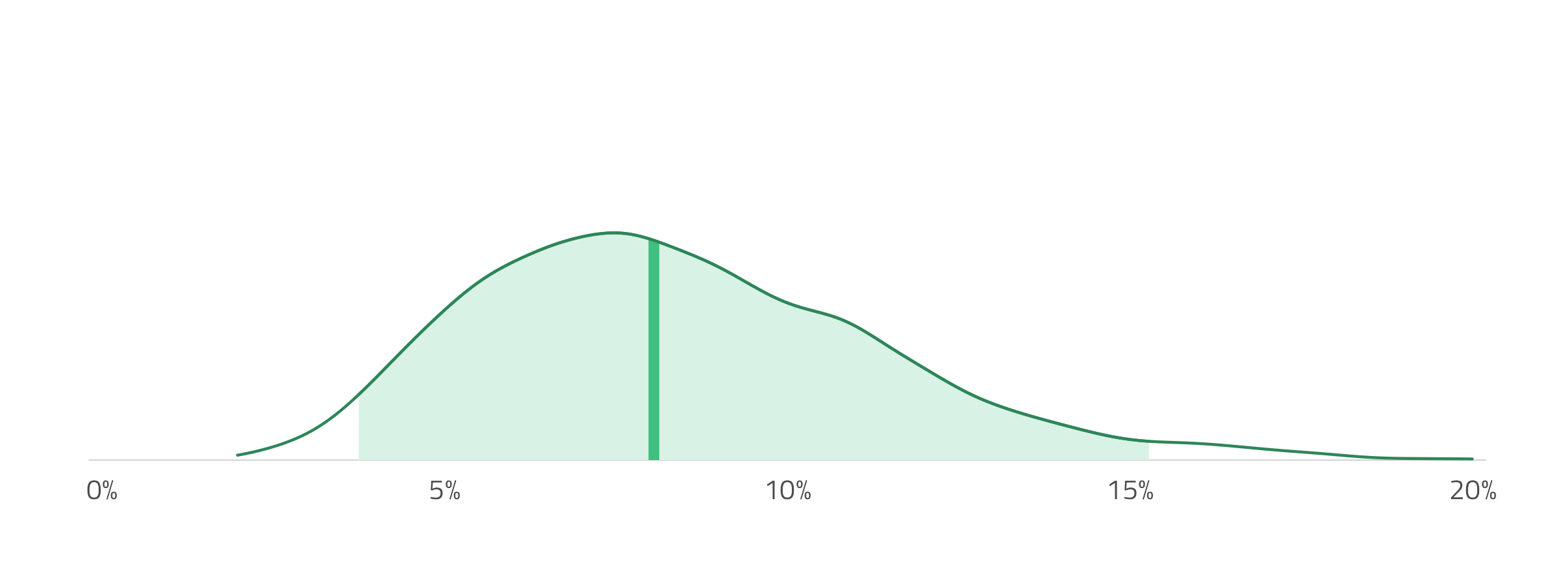
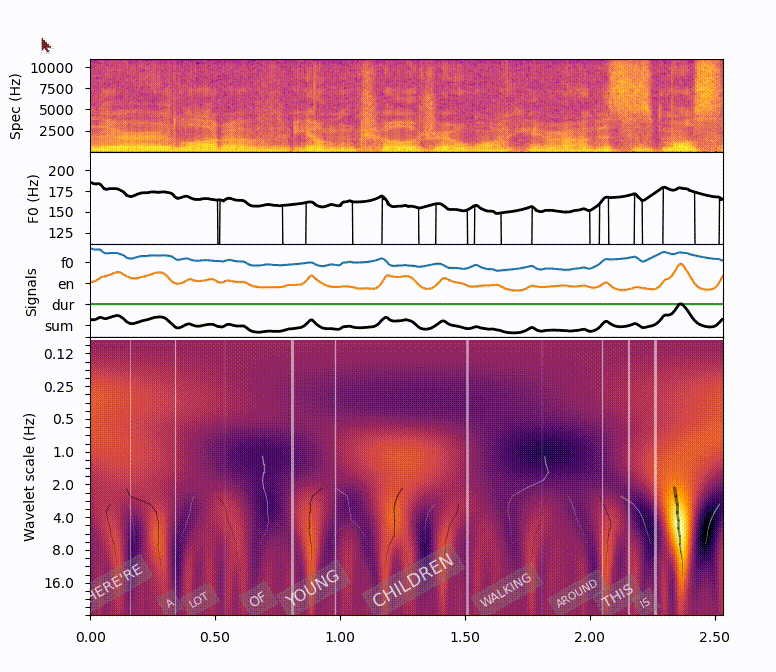

This research was supported by the Polish-American Fulbright Commission
wavelets :: prosodic vs. syntactic boundaries

No automatically detected prosodic boundary at X: "I don't get it X I hate", but there is a syntactic boundary. Maybe glottaling is a more direct reflection of syntax than of prosody? Or maybe the objective, signal derived prosody is not the right approach?